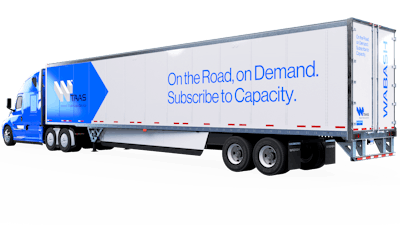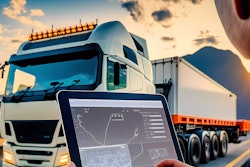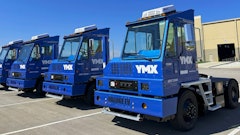
Supply chain visibility often centers on the goods moving across the supply chain—understanding the “what, when and where” from order to fulfillment. However, while the goods are critical, the transportation of those goods plays an equally pivotal role in unlocking supply chain efficiencies.
Amid freight cycle challenges and the growing demand for visibility, overlooking trailers, one of the key spokes in the supply chain network, could be a costly oversight. Trailers are evolving into data-driven assets capable of driving scalability, operational efficiency and enhanced food logistics insights.
The evolution of the loading process
To understand how trailers impact supply chains, first consider how trailer loading and unloading have transformed. Many owner-operators are minimizing costs and streamlining operations with innovative models like power-only freight solutions. This allows shippers to focus solely on driving trucks without owning or managing trailers.
Additionally, truck drivers increasingly prioritize flexibility and work-life balance, aspiring to complete deliveries efficiently and return home promptly. Since 2020, pandemic-related disruptions have prompted shippers, third-party logistics (3PL) providers and brokers to rethink their logistics strategies, leading to a resurgence in drop-trailer models.
Drop-and-hook trucking, where loaded trailers are dropped at a facility, and drivers immediately hook onto preloaded or empty trailers, reduces downtime and accelerates freight movement. This approach improves efficiency while keeping commerce flowing.
Unlocking trailer data with telematics
Historically, GPS and telematics systems were limited to tractors, but today’s advanced trailer telematics enable unprecedented visibility. Trailers equipped with real-time data collection capabilities allow for location tracking, health monitoring and performance tracking.
For example, a Trailers-as-a-Service integrates real-time trailer monitoring, proactive maintenance scheduling, and data collection to enhance operational efficiency. Early detection of issues minimizes breakdowns, extends trailer lifespans and delivers cost savings.
Combating cargo theft with data
Beyond efficiency, trailer data also plays a critical role in combating cargo theft and damages— two growing concerns that contribute to rising insurance costs. During the first half of the year, cargo theft increased by 49% over the same time in 2023. According to a recent Food Logistics article, sophisticated fraud schemes continue to increase. At the same time, traditional theft methods—including stolen trailers and full shipment theft—account for the majority of incidents. Beyond theft, cargo damages can be challenging as well as difficult to combat without data.
Sensors with GPS technology can provide real-time location tracking of the trailer. This allows fleet managers to monitor the trailer's movements and quickly detect any unauthorized deviations from the planned route.
In addition, geofencing technology can create virtual boundaries around specific areas. If a trailer moves outside these boundaries, an alert is triggered, notifying the fleet manager of potential unauthorized movement.
Door sensors, cargo sensors and/or cameras enable intervention through alerts or visibility especially in drop and hook operations where often the cargo is loaded and sealed prior to a carrier picking up a load. Door sensors can detect when trailer doors are opened or closed. If the doors or locks are opened outside of designated areas or times, an alert can be sent to the fleet manager, indicating potential unauthorized access. Having the visibility, via cameras, can show proper loading/securement and potentially pallet counts to simplify the potential claim process and the allocation to the party who may have contributed to the cargo loss.
These technologies not only deter theft but also help carriers maintain compliance with weight requirements, enhancing safety and durability. The ability to track and secure goods provides a competitive advantage for logistics providers.
Data to drive capacity
Managing capacity amidst market fluctuations is another challenge logistics providers face. Traditional methods of owning and maintaining trailers can be costly and inflexible. Emerging subscription-based offerings address this challenge by providing flexible trailer access to scale operations; comprehensive managed care, including parts and services for maintenance and repair; and telematics for real-time tracking and analytics.
These solutions enable logistics providers to optimize trailer positioning, minimize empty miles, reduce fuel consumption, and streamline operations, all while driving scalability.
As trailers evolve into data-rich assets, they are transforming supply chains by providing deeper insights and driving operational improvements. From combating theft to optimizing capacity, trailers equipped with telematics and advanced analytics are becoming essential tools for logistics providers. Utilizing the trailer data versus the tractor data also gives more control over the flow of data and eliminates the need to rely on mobile applications or ELD connections on the tractors. Most of all, trailer data is key because it continues to share input even when not hooked up to a tractor.
By utilizing data-driven platforms, companies can make informed decisions to unlock efficiencies and achieve greater supply chain visibility.

















